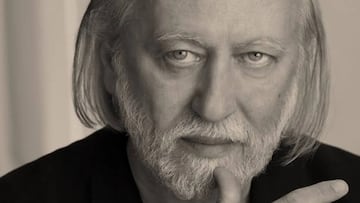This is László Krasznahorkai: The winner of the 2025 Nobel Prize in Literature
Hungarian novelist László Krasznahorkai wins the 2025 Nobel Prize in Literature for a body of work that turns darkness into beauty.

From the edge of Eastern Europe, in a small Hungarian town near the Romanian border, emerged one of the most haunting voices in modern fiction. László Krasznahorkai — long a cult figure among readers of Central European literature — has been awarded the 2025 Nobel Prize in Literature, honored for “his compelling and visionary oeuvre that, in the midst of apocalyptic terror, reaffirms the power of art.”
A style that defies gravity
Krasznahorkai’s prose is unlike anyone else’s. His sentences unfold in hypnotic waves — long, unbroken currents of thought that sweep readers through ruined landscapes and fractured minds. The result feels both mesmerizing and unsettling, as if the world itself were unraveling one comma at a time.
Critics often compare him to Kafka, Thomas Bernhard, and Dostoyevsky. Yet his voice is unmistakably his own: dense, feverish, and charged with a strange, relentless rhythm. The late Susan Sontag once called him “the master of the apocalypse” after reading his breakthrough novel The Melancholy of Resistance (1989) — a label that has followed him ever since.
The books that shaped a vision
Krasznahorkai’s debut novel, Sátántangó (1985), became a literary sensation in Hungary. Set in a collapsing collective farm, it follows a community awaiting a messiah who turns out to be a con man. The story’s bleak grandeur later inspired a legendary seven-hour film adaptation by the director Béla Tarr, Krasznahorkai’s longtime collaborator.
The following are some of his subsequent works which expanded his exploration of decay, delusion, and transcendence:
- The Melancholy of Resistance (1989): A grotesque dystopia about the collapse of social order.
- War and War (1999): The odyssey of a Hungarian archivist who travels to New York City to preserve an ancient manuscript.
- Baron Wenckheim’s Homecoming (2016): A darkly comic tale of a ruined aristocrat returning to his hometown.
- Herscht 07769: Florian Herscht’s Bach Novel (2021): A haunting portrait of rural Germany overshadowed by chaos and the ghost of Bach.
In Seiobo There Below (2008), a collection of stories structured according to the Fibonacci sequence, Krasznahorkai turned to East Asia for inspiration, meditating on art, beauty, and the divine precision of creation.
A total artist
Krasznahorkai’s artistic reach extends far beyond fiction. He has worked closely with visual artists and filmmakers, most notably Béla Tarr — with whom he co-wrote Werckmeister Harmonies and The Turin Horse. His collaborations with German painter Max Neumann have also produced striking hybrids of image and text.
His writing probes the spiritual and moral fractures of modern life — the collapse of meaning, the disintegration of community, and the desperate search for transcendence in a world that seems to be ending, again and again.
A Nobel for resistance — and reflection
The 2025 Nobel Prize in Literature recognizes not only Krasznahorkai’s towering artistic achievement but also the ethical stance his work represents. In an age of instant gratification and disposable content, his novels demand the opposite: patience, attention, surrender.
Reading him is not easy — and that’s the point. Krasznahorkai’s prose resists simplification. It insists that literature can still be a form of resistance, a space for contemplation when everything else accelerates. His Nobel win is a quiet but profound reminder: art endures, even as the world falls apart.
Related stories
Get your game on! Whether you’re into NFL touchdowns, NBA buzzer-beaters, world-class soccer goals, or MLB home runs, our app has it all.
Dive into live coverage, expert insights, breaking news, exclusive videos, and more – plus, stay updated on the latest in current affairs and entertainment. Download now for all-access coverage, right at your fingertips – anytime, anywhere.
Complete your personal details to comment